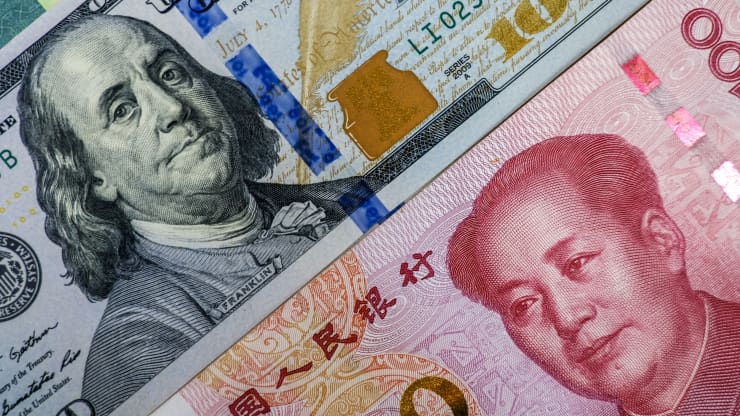
Investors are dumping the Chinese yuan and Hong Kong dollar as the selloff in China stocks continues, and those currencies slid on Tuesday to lows not seen since April.
Regulatory fears are spreading to other parts of the Chinese market, after Beijing stepped up restrictions on its education sector late last week, and continued its crackdown on its internet companies.
The offshore yuan — which trades outside mainland China — weakened by nearly 1% compared to last Friday, dropping to as low as 6.528 yuan against the dollar overnight.
By Wednesday morning, it had pared those losses slightly to trade at 6.5142 yuan against the dollar.
Chinese A shares — which trade in mainland China and are included in global indexes like the MSCI — are traded in the yuan.
The Hong Kong dollar also tumbled to lows not seen since April, after a two-day rout in the city’s Hang Seng index this week. It declined to as low as 7.7849 against the greenback overnight.
The Hang Seng index plunged more than 8% in the first two days of the week. Overall, it’s down 13% for the month — its worst performance since September 2011.
Mainland Chinese shares fared a little better. The Shenzhen composite is down 5.5% for the month – on pace for the worst month since Sep 2020, while the Shanghai composite lost nearly 6% so far this month, on pace for the worst month since October 2018.
Vishnu Varathan, head of economics and strategy at Mizuho Bank, warned that further weakening of the yuan may be ahead.
“Our view is that it may be difficult to avoid further CNY (and CNH) sell-off in the wake of the on-going regulatory crack-down that Beijing is the midst of,” he told CNBC via email. He was referring to the onshore and offshore yuan respectively.
But he noted that the yuan is likely to continue trading against the dollar in a volatile manner, rather than “one-way trades.”
It will likely be a “rather bumpy and volatile path” upward for the onshore and offshore yuan against the greenback, he said, adding that the offshore yuan could have a greater degree of weakness and volatility.
A more “durable” tumble in the offshore yuan is a risk if “markets perceive that Beijing’s action could create long-lasting impediments to the ability of Chinese firms to raise capital offshore,” Varathan said.
“But for now, the more imminent motivation for (offshore yuan) sell-off will be ‘risk off’ from adverse regulatory shocks that have been rippling through tech, property, spilling over to private education and with healthcare potentially in the cross-hairs,” he concluded.
China’s recent actions suggest that China is increasingly “turning inward,” said Claudio Piron, co-head of Asia rates and FX strategy.
“If it is more insular then that could be more to the detriment of the renminbi (Chinese yuan), particularly if it comes with weaker PMI numbers as well,” he told CNBC, referring to data from the Purchasing Managers’ Index which measures the performance of the manufacturing sector.